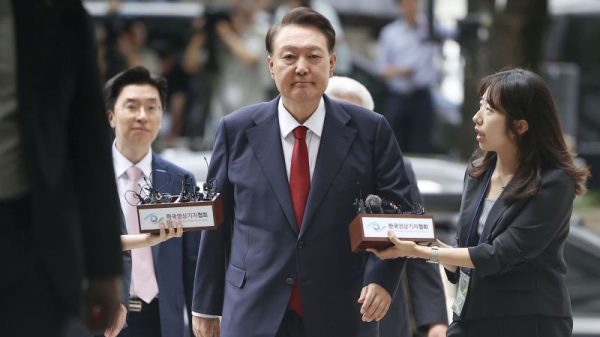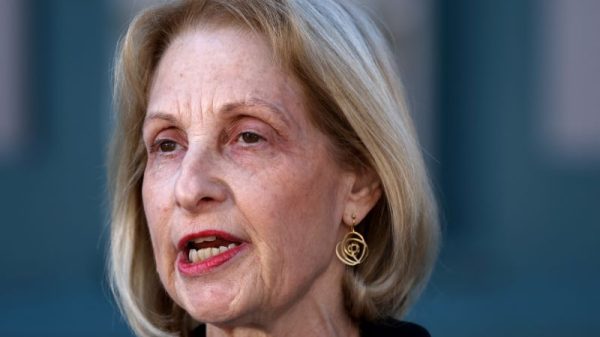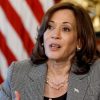This is the first of a two-part series breaking down the Fox News Power Rankings ahead of the second 2024 GOP presidential debate. Part 2 will be published on Thursday.
Following an explosive first debate and with one week to go until the second, the Republican presidential candidates are getting more vocal about an important divide within their party.
No one has been clearer than former Vice President Mike Pence, who delivered a speech this month in New Hampshire called ‘populism vs conservatism: Republicans’ time for choosing.’
Pence is picking up on a nearly even split between these philosophies among the highly ranked presidential candidates.
Most Republican primary voters, however, are choosing populist candidates and ideas. And that has important implications for the direction of this race.
What do populism and conservatism mean in this race?
First, let’s build a working definition of ‘populism’ and ‘conservatism.’ The difference between the two shows up when the candidates talk about three themes on the trail:
Foreign policy: The populist candidates say they don’t want America to be the world’s policeman, and are skeptical about sending more resources to support Ukraine. Traditional conservatives say that it’s in the country’s interest to protect allies.Spending & role of government: Populists are reluctant to make big changes to programs like Social Security and Medicare and say they can grow the country without cutting entitlement spending; conservative candidates say the U.S. must do whatever it takes to reduce its deficits and debt.Trust in institutions: Populists express distrust in government institutions, like state election offices and three-letter federal agencies like the FBI, IRS, and CDC. Conservatives share some of this distrust, but do not call for, say, the elimination of the FBI.
The highest ranked candidates don’t always fit neatly into the ‘populist’ or ‘conservative’ columns.
Based on the definitions above, though, former President Donald Trump and entrepreneur Vivek Ramaswamy sit in the populism corner. Gov. Ron DeSantis straddles the line, but generally leans towards the same philosophy.
Pence, and his South Carolinian competitors Gov. Nikki Haley and Sen. Tim Scott, are most often found in the traditional conservative camp.
How do Republican voters feel about these issues?
Candidate polling is the clearest indicator that populism is winning among voters. Trump, who ushered in a new wave of populism and remains its standard-bearer, is enjoying a dominant polling lead.
According to the latest national Fox News survey, 60% of GOP primary voters back Trump for the nomination. The only other candidates to receive double digit support are DeSantis, at 13%, and Ramaswamy, at 11%.
Together, support for the populist wing adds up to 84% of the primary voter base.
Haley, Pence, and Scott contribute 11% combined, with the rest going to candidates who polled individually at 2% or less.
According to the same survey, 60% of Republicans say Trump, DeSantis or Ramaswamy is their second choice.
Majorities also support populist positions in all three of the ideological debates mentioned above:
Foreign policy
70% of potential Republican primary voters say ‘we should pay less attention to our problems overseas and concentrate on problems here at home’ (NYT/Siena Poll, July).62% of GOP primary voters say the U.S. is doing ‘too much’ to help Ukraine (WSJ Poll, August).
Spending & role of government
59% of potential Republican primary voters say it’s more important to keep Social Security and Medicare benefits ‘as they are’ than reducing the budget deficit (NYT/Siena Poll, July).
Trust in institutions
86% of Republicans say they do not trust Washington, and 60% of Republicans lack confidence in the FBI (Fox News Poll, June).78% of GOP primary voters say Trump’s actions after the 2020 elections were a ‘legitimate effort to make sure votes were tallied accurately’ (WSJ Poll, August).
This does not make the Republican Party a populist monolith. In all of these results, there is at least double digit support for the alternative position, and sometimes significantly more so.
These are also not the only issues that Republicans care about. Abortion and immigration are also top-tier concerns, and voter groups prioritize all of the major issues differently.
Clearly, though, populist candidates have the majority of voters on their side, both in the primary, and for the issues that are dividing the party.
What does this mean for the primary?
These rankings place most of the candidates beneath Trump in new tiers or positions. The forecast also anticipates that a candidate from each wing will come in first and second place, but a standard-bearer for the conservative wing has not yet emerged.
Frontrunner
Trump continues to receive support from a majority of Republicans in gold-standard national and state polls, and now also enjoys a wider gap between himself and his next closest competitor than at any other point in the cycle so far.
He remains the clear frontrunner of this race.
Challengers
Last time, the Power Rankings called the next tier of candidates underneath Trump the ‘contenders.’ In other words, the candidates who were serious threats to his nomination.
With support for DeSantis falling, and little national or statewide polling that is encouraging for the candidates behind him, nobody clears that bar this time.
Instead, the next tier of candidates are the ‘challengers.’ They all have pathways to the nomination, but haven’t distinguished themselves enough from the pack to take on the frontrunner.
DeSantis still leads this group, though by a smaller margin.
Ramaswamy moves up to third place, on the back of consistent improvements in national polling. The 38-year-old entrepreneur is yet to break out of the single digits in gold-standard statewide polls.
According to voters, Ramaswamy performed best out of any candidate at the first debate. 35% of people who watched or heard about the event said he ‘exceeded expectations’ (WSJ Poll, August).
Haley sits close behind, both in terms of her debate performance and her overall position on the Power Rankings. 27% of voters in the same poll say she exceeded expectations in Milwaukee, leaving candidates beneath her in the dust.
She is making promising gains in national and statewide polls. In her home state, for example, she most recently sat at 18% (Monmouth/WaPo Poll, September). Remember, though, that South Carolina only awards delegates to the winner of their primary.
Scott has dropped two places. The first debate did him no favors, with only 2% of voters saying he exceeded expectations. There are signs that his support in the early states is weakening.
After a fiery performance in the first debate, Pence is still struggling to find his constituency. He may be leading the populism vs conservatism debate, but so far, voters are not listening. He stays in sixth.
Note on second place
The challengers are also grouped into the wings of the party that they generally represent: DeSantis and Ramaswamy in the ‘populist’ wing, and Haley, Scott and Pence in the ‘conservative’ wing.
Each wing offers a very different vision to voters. Therefore, as candidates drop out, their supporters are more likely to support someone like-minded than jump to a different ideology.
As a result, the most likely outcome is that as the field narrows, candidates will remain from both wings of the party.
This forecast therefore expects that if Trump continues to lead the race, the candidate in second place is most likely to come from the conservative wing.
None of the conservative wing candidates have done enough to distinguish themselves from the pack yet, so they can’t be placed higher in the individual rankings. It is also possible, though unlikely, that all of the leading candidates from the conservative wing drop out of the race early.
The second debate airs next Wednesday
Fox Business and Univision will host the second Republican debate next Wednesday, September 27, at 9PM ET, from the Ronald Reagan Presidential Library in California.
Your moderators are Fox’s Dana Perino and Stuart Varney, and Univision’s Ilia Calderón.
Live coverage begins at 8PM ET on Fox Business Network and 8:30PM ET on Fox News Channel. The debate will simulcast on both networks, along with Univision, and streaming partner Rumble.



















